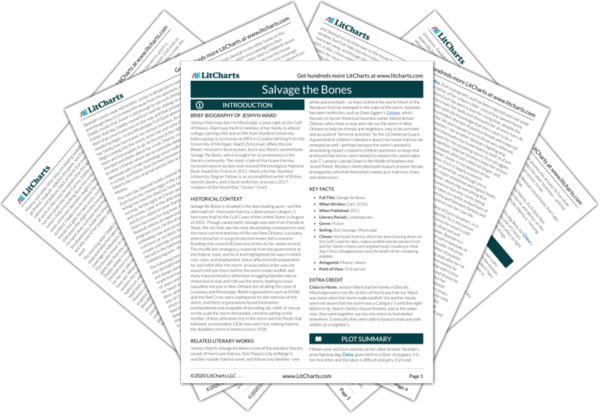Next
Summary
Salvage the Bones Study Guide |
Next
Summary
|
Welcome to the LitCharts study guide on Jesmyn Ward's Salvage the Bones. Created by the original team behind SparkNotes, LitCharts are the world's best literature guides.

Close to Home. Jesmyn Ward and her family in DeLisle, Mississippi were real-life victims of Hurricane Katrina. Ward was home when the storm made landfall; she and her family were not aware that the storm was a Category 5 until the night before it hit. Ward’s family’s house flooded, and as the water rose, they went together out into the storm to find shelter elsewhere. Eventually they were able to board a boat and seek shelter at a neighbor’s.